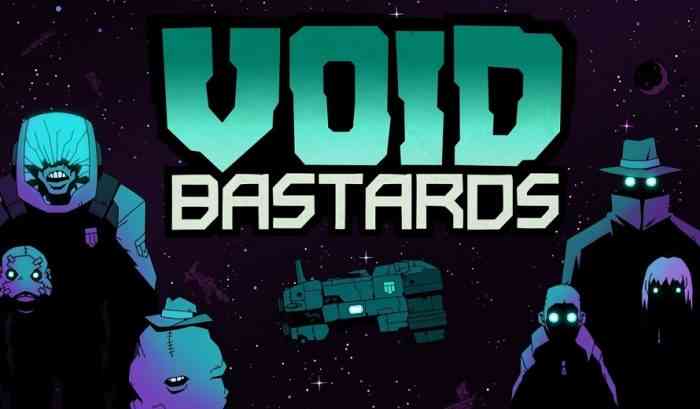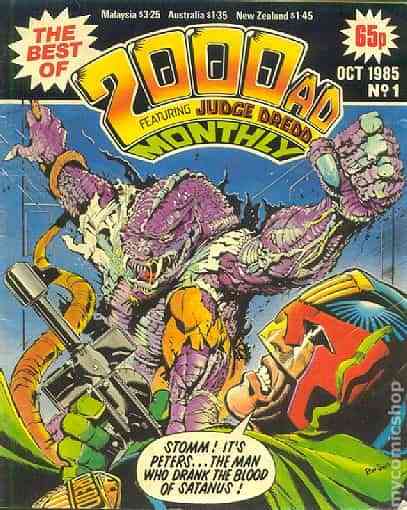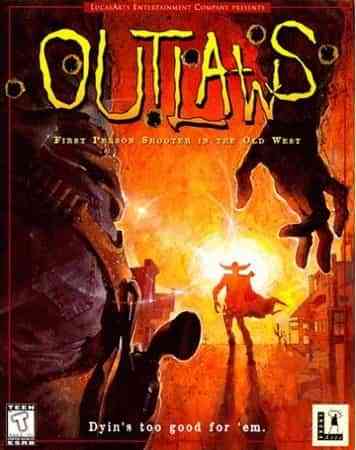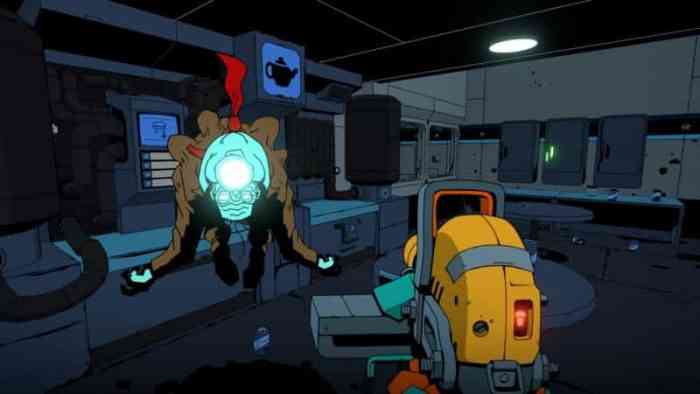Ben Lee is a Big Sci-Fi Fan, And It Shows in Void Bastards
I arrived at the Void Bastards launch party and after accepting the complimentary pin provided and adhering it to my vest before finding an old friend of mine working behind the bar. After catching up, I asked them which of the game’s developers had shown up, and they happily informed me that the art director was present, sporting a beard dyed Void Bastards teal. Void Bastards art style is one of the things that really put it on the map as a must-check-out title of this year after it was announced at XO18. Plus, it takes a strong sense of humor and self-awareness to dye your beard – the former I have in spades, the latter I lack equally – this detail only makes me more excited to talk to them as soon as possible.

Ben Lee is a busy bee in one of two spots: what I’ll call the PC pit, where he’s streaming the game with another developer while discussing their time working on it, and the bar (as artists do). On my ???th trip to the bar that night, I find Ben and his colleague literally popping champagne. “This is an opportune moment!” my brain tells me, enforcing the aforementioned lack of self-awareness. I wait for a lull in the excitement and introduce myself to Ben. He seems genuinely happy to meet me and obliges to answer a couple questions out on the patio (note to self, and other young writers: try not to sound like a cop when asking a developer to speak with you).
We take a seat on the empty patio and I tell Ben that I want to ask him some more personal questions, as I’m sure the team has already been bombarded with questions about development for quite some time. He warns me that he talks “a lot, and in a very roundabout way, and I ramble.” I do too, so I’m happy to hear this. I’m even happier to hear him do exactly that for 15 minutes on one question.
What were some of your creative inspirations growing up?
So, interestingly, when I told my younger sister we were launching the game this week, we finally finished it, it’s coming out, sent her some videos and stuff. Because she’s my family, she sent me quite a personal email. She’s just like “this is amazing!” – she’s my sister, so she’s gonna say it’s amazing, but she was like “this is amazing, this is like your entire past in one thing.” And I was like “You’re right!” This is every element of my life with comics and animation, and everything I was really into as a kid, but also my career. I went into animation as a career in the early 90s when it was still pencil and paper and cameras, and from that, I transitioned into video games in 2002. I wasn’t really conscious of that until [my sister] made that statement.
I wanted to be a comic artist when I was about 18, and I actually wound up working on an independent Australian comic with some people I’d met, and it was a science-fiction anthology comic because I loved 2000 A.D. as a kid, and the reason was weirdly economic. I loved Marvel comics but I couldn’t actually afford them – 2000 A.D. was a weekly British science fiction anthology comic, which sold for 99p. My local newsagent didn’t understand that there was an exchange rate, so they sold it for 99 cents. I could get a comic every week for 99 cents – I don’t remember what the price of a Marvel comic was, but it was more than the pathetically small amount of money I had to spend – but I could afford a 2000 A.D..

Because it was the early-to-mid 80s, 2000 A.D. at the time was politically subversive, and it was…punk rock’s such a hackneyed term – it wasn’t punk rock, but the writers were talking about Thatcher’s Britain, which was an oppressive, shitty time for people. So that means it was subversive, kinda rebellious, Alan Moore did a lot of writing around the time. Anyway, it had a huge effect on me as a kid, plus I grew up reading sci-fi anthology novels from the 60s.
At this point, one of Ben’s colleagues gets his attention in an effort to get him to correct the positioning of the Void Bastards pin he’s wearing. He laughs and says “Mickey, you’re outsourcing this now!” He explains to me that Mickey’s been fixing his pin for him all night because it won’t stay up.
So, I’ve quoted 2000 A.D. as being an inspiration for the art of Void Bastards, and people will go “which artist?” No no, it’s not copied from 2000 A.D. – Void Bastards is an imaginary comic that was printed in a never-happened 1986. If you look at the subtleties of the game, there’s no holograms or modern Marvel movie stuff in it, it’s all CRT screens and bolts and levers like people drew back then. Which isn’t important really, but that’s just sort of the way I built it in my head. It’s a comic that was never made, printed in 1986, drawn impossibly by me cause I was a kid, so it’s my 2000 A.D. comic, that’s a video game. I hope that made sense. The spirit of 2000 A.D. was in it, which I’ve always had, that’s been in me since I was a ten-year-old kid, but at no point did I actively try to ape an artists style or copy an idea from it.
I’ve always loved Lucasarts’ Outlaws. When we started doing [Void Bastards], Jon was like, “Is it even possible for us as a small studio to do a first-person shooter?” I was like, “I don’t think so. I think we’re gonna have to harp a lot of people if we wanna do this, or maybe do a different game, cause it’s too much work for 4 or 5 people.” But after thinking about it for a few nights, I came back and went “Well what if we did Outlaws, but with better rez?” Sprites that weren’t really chunky, sprites that were just nice high-rez drawings. Technology would now allow us to do that, whereas it couldn’t in the 90s. Jon’s like “I don’t know, won’t that look bad?” I said “Honestly, maybe it will, I don’t know. It’ll come down to ‘Can we get the backgrounds to mesh with the sprites in a way that doesn’t make them look like they don’t join up together?’” And then Farbs started writing this shader that would make the line-work work the way I wanted it to.

So that’s kind of how we arrived at Void Bastards, it was a mix of my favorite ever first-person shooter from the 90s, which uses sprites as monsters and has 3D environments, drawn in cartoony style rather than a representational, realistic style. And my love of 2000 A.D. themes and black and white – I mean, this isn’t a black and white game, but the heavy black inking is because I’m emulating that black and white ink newsprint comic that I used to love when I was a kid.
The heavy black inking is very characteristic to this game, it’s something people immediately notice.
It’s also difficult to get right, and it’s a huge risk. What I love about working with Jon and Blue Manchu is that we’ve got to this point in our working relationship, we’ve done things together for so long – Card Hunter, Freedom Force and those other games – that he trusts me to come up with the decision of what we should do for the art, which is very rare. I mean, all art directors are given that responsibility, and there’s a lot of input from other areas, but when Jon trusts me to do a good job, it’s frightening because that means I have to come up with something worthy of that respect and that trust, but it’s also immensely freeing because I don’t have anyone telling me what to do. Void Bastards is what came out of that situation, where I could solve all of these technical limitations that we had by not having a multi-million dollar studio and hundreds of artists, it turned into “well, it’s just gonna have to be how you draw naturally, given these parameters, because that’s the only way it’s gonna be unique.”
Uniqueness is something we decided was important very early on, because there are so many first-person shooters made that are really competent and really good…if ours just looks like one of those but has a slightly different ruleset to it, there’s a huge of just being completely lost in the sea of very good, competent, first-person shooters. So it was important we stood out from that, and kind of took a leap of faith. Jon’s not known for being a huge fan of cel-shaded or weird looking art, so I wasn’t sure if he’d go for it. I thought he might just go “I don’t know, it sounds a bit too kiddie.” We didn’t know if it would work until we did a test scene, and it looks nothing like this game, it just had the same linework and color usage, but the monster looked completely different, technology was actually much more realistic and detailed. It was like the International Space Station, more “near-future” rather than “crazy sci-fi.” I didn’t know it at the time, but I found it difficult to do that because it required too much reference to real things. There were factions in the team that thought that was important, and I’m like “Err, yeah, but…it’s hard and it’s not very interesting.” Real things might make you feel like you’re in a real environment, but they don’t capture imagination. So then this world of Void Bastards being like a black comedy…it was Jon’s suggestion. Originally it was a very serious, sad game. It was a sad, lonely, starving to death in space, serious simulation. And literally about halfway through we just decided, “it’s too boring, it’s making it hard for us to come up with cool ideas cause it’s so locked into itself being realistic.”
That’s when we brought Cara on board to be a narrative designer. She loves all the same comics and sci-fi that I grew up with, so we just meshed really well and it turned into this. We went from trying to realistic to “just be nuts.” Don’t try and be “Hahaha, make jokes,” it’s the comedy of tragedy. You have to laugh at the horror of the situation the person’s in when you’re playing this game, this prisoner. For me, I think that’s when the whole project came together – when we went “we’ll do black comedy.” That’s when it was itself, when it wasn’t trying to collect ideas and be a thing, it was its own beast. Everything in it sort of wrote itself from that point, when the answer to any question is, “hilariously worse than how it started.” Doesn’t matter what the question is – “How do we handle oxygen?” In the most hilariously shitty, terrible, worst way that it could be, based on the premise that too much bureaucracy is horrible, therefore it’ll be horrible, and hopefully kinda funny cause it’s so horrible.

And then it sort of became easy from that point, it was just a matter of getting all of the stuff made. Jon had the problem of tuning it so it was really fun because it actually wasn’t for the first year and a half, it was either too easy or too hard or…we knew what we were trying to do, but we weren’t getting where we needed to. It was a four-year project, so after a year and a half, we finally got to this point where it was a little bit make or break. “If we can’t make this fun in the next couple of weeks, we might just have to admit that it’s not a good idea. We thought it would be good, but it doesn’t really work.”
We got some really good feedback from Ken Levine, who used to work with Jon running Irrational Games. He came back and he was very enthusiastic about it. When you’re focused in on something it’s very hard to see…you don’t really know if it’s good or not. Ken’s feedback and enthusiasm really sorta spurred us on to make that push. I don’t mean just Ken, I’m remembering around that time we were all a bit like “Oh no, maybe it won’t work.” Ken was like “No, it’s gonna work, you just need to polish a few things up, I like it already!” We’re like “Shit, okay! Maybe it is alright.” I was asked earlier tonight “what was the hardest thing about [making] the game?” There was no thing that was hard, the larger thing that was difficult was getting the loop to be fun – we knew it would be, but we hadn’t figured out how to do it for quite a long time. So once we achieved that, that was the hardest thing. Quite late in the project, we went “Okay, we are now confident this will be a fun game and it’s gonna work,” but we weren’t really sure for quite a long time.
That’s really genuinely inspiring because I’m sure a lot of developers out there get a week or two into development, and they’re like “this isn’t good enough, or it’s not fun enough.”
This is what tends to happen, they’re like “Yeah, but we haven’t gotten it to the point where you’ll see the fun yet, please don’t cut us off, we need more time.” And for whatever reason, often, corporates will go “Oh well you don’t have any more time and we don’t see the fun yet,” so then it gets canceled, even if it could have been great. That’s what’s so great about working for an indie studio like Blue Manchu, is that…it’s just us. There are no outside forces forcing us to stop development because of an arbitrary reason, we just keep going until we decide that we should abandon or continue with it.
So it’s terrifying being at an indie studio, but at the same time you’re awarded a freedom – or at least, Blue Manchu affords me the freedom – that you don’t get in a larger studio. It’s been a really interesting, important project for me, I think it’s the best game I’ve worked on. I’ve done a bunch of other stuff that wasn’t video games early on in my career – this is the single work of art I’m happiest with in my life so far, and that’s not something I’ve ever said before. Everything else I’ve ever done, I’ve been happy enough with it, felt like I did my job, but there are other bits I hate. There’s stuff that I don’t think is perfect in Void Bastards, but it’s close enough. I’m really proud of this game. I started in games in 2002, so this is after like, a long time – which I liked! I’m not saying that was a bad time, but it was more restrictive than what I’ve got to do now. And if you’d given me this opportunity when I first started, I would have messed it up. I could only make this game because I went through all those years of people telling me what to do and trying to please everyone. It was important that I did it, if I’d never had that I’d be a real jerk by now and making something that didn’t look that good.
It would be like the James Cameron effect – everyone just told you you’re amazing, so you do whatever.
And you make Prometheus.
Check back for even more from my time with Ben Lee later this week, as well as our review for Void Bastards! The game is currently available for PC and Xbox One.